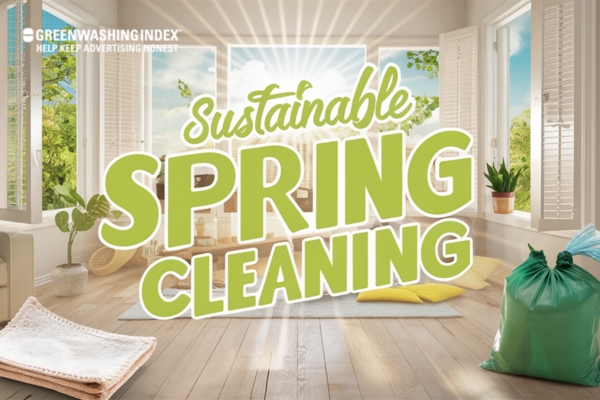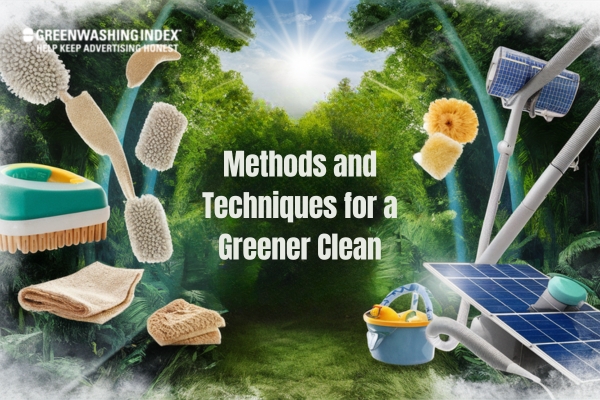

The birds are chirping, the flowers are blooming, and you’re ready to tackle the annual ritual of spring cleaning. But this year, why not make it a sustainable spring cleaning? Imagine turning your home into a sanctuary of fresh air and eco-friendliness. By adopting sustainable practices, you can clean your space while protecting our planet.
This journey not only leads to a cleaner home but also a healthier environment. Let’s delve into the world of eco-friendly cleaning, where natural ingredients and innovative methods come together for a refreshing change. Ready to embark on this green adventure?
Sustainable spring cleaning is an essential practice that not only revitalizes our living spaces but also promotes environmental stewardship. By adopting eco-friendly cleaning methods, we can significantly reduce our ecological footprint while enhancing the health and comfort of our homes.

This approach encourages the use of natural products, minimizes waste, and fosters a deeper connection to our surroundings. As we embrace this seasonal ritual, we contribute to a healthier planet and cultivate a sense of well-being in our lives.
By integrating these sustainable practices into our spring cleaning routines, we not only enhance our living spaces but also contribute positively to our health and the planet.
Eco-friendly cleaning products are a wonderful choice for those who want to maintain a clean home without harming the environment. These products often use natural ingredients that are gentle yet effective.
Let’s explore how these natural ingredients can be a great alternative to traditional cleaners and discover simple DIY cleaning solutions that you can make at home.
Using natural ingredients in cleaning products comes with many benefits:
Creating your own eco-friendly cleaning solutions is easy and can be done with a few common household items. Here are some simple recipes:
By using these natural ingredients and DIY solutions, you can keep your home clean while being kind to our planet.
Switching to eco-friendly cleaning techniques is a win-win for the planet and your home. These methods not only cut down on waste but also make your living space healthier.

As environmental awareness grows, many individuals and households are seeking sustainable cleaning methods that minimize ecological impact. Here are several effective techniques and practices for achieving a greener clean.
Using biodegradable and non-toxic cleaning products is fundamental to eco-friendly cleaning. These products are derived from natural, renewable resources and do not contain harsh chemicals that can harm both the environment and human health. They decompose easily after use, reducing pollution in waterways and soil. By choosing these products, homeowners can maintain a clean living space while supporting sustainable practices.
Microfiber cleaning technology employs cloths and mops made from synthetic fibers that effectively trap dirt, dust, and microbes. This method typically requires less water and fewer chemical cleaners compared to traditional methods, leading to significant water conservation and reduced chemical usage. Additionally, microfiber products are durable and reusable, which helps decrease waste associated with disposable cleaning supplies.
Steam cleaning utilizes high-temperature steam to sanitize surfaces without the need for chemical agents. This method effectively eliminates bacteria, mold, and dust mites, making it particularly beneficial for allergy sufferers. Steam cleaning not only provides a deep clean but also promotes a safer home environment free from allergens.
Opting for concentrated cleaning solutions is another eco-friendly approach. These products are designed to be diluted with water, which means that a small quantity can achieve the same cleaning effect as larger amounts of traditional cleaners. This practice reduces packaging waste and transportation emissions, contributing to a lower carbon footprint.
Incorporating recycled and sustainable cleaning tools into your routine is essential for reducing environmental impact. Tools made from recycled materials or sustainably sourced natural products help minimize reliance on plastic and other non-renewable resources. By using these tools, individuals contribute to the circular economy while effectively maintaining cleanliness.
Creating homemade cleaning solutions using common household ingredients such as vinegar, baking soda, and lemon juice can significantly reduce reliance on commercial cleaners that often contain harmful chemicals. These natural alternatives are effective for various cleaning tasks while minimizing packaging waste.
Implementing proper waste disposal practices is crucial in green cleaning efforts. This includes separating recyclables from non-recyclable waste and ensuring that cleaning product containers are disposed of correctly according to local recycling guidelines. Engaging in recycling programs helps conserve resources and reduce overall waste generation.
For those who have access to composting facilities, composting organic waste generated during cleaning (like fruit peels or plant-based residues) can divert waste from landfills while producing nutrient-rich soil for gardening.
Embracing sustainable practices during spring cleaning not only revitalizes your home but also contributes positively to the environment. By reducing waste and recycling, you can minimize your ecological footprint while ensuring a fresh and clean living space. Sustainable spring cleaning involves using eco-friendly products, repurposing items, and adopting practices that promote recycling.
This approach not only enhances the health of your home but also fosters a deeper connection with our planet. Here are some effective strategies to consider:
By integrating these sustainable practices into your spring cleaning routine, you can create a cleaner home while taking care of the planet.
Embracing sustainability all year round involves making conscious choices every day. Begin by minimizing energy use. Turn off lights and unplug devices when they’re not needed. Opt for energy-efficient appliances to keep your home running smoothly without wasting power.
Eating seasonally is another excellent way to stay sustainable. It supports nearby farmers and cuts down on the energy used to transport food over long distances. Composting kitchen scraps helps reduce landfill waste while giving nutrients back to the earth.
Water conservation is crucial; fix any leaks quickly and think about installing low-flow taps and showerheads. Simplify your life by decluttering and finding creative ways to reuse items, which helps in reducing waste. Staying informed about environmental issues and choosing to support businesses that prioritize sustainability can create a positive ripple effect.
Sustainable spring cleaning is not just a trend; it’s a meaningful way to care for our planet while keeping our homes fresh and vibrant. By choosing eco-friendly products, adopting greener methods, and reducing waste, we can make a positive impact on the environment.
These steps not only benefit the earth but also promote a healthier living space for our families. Embracing sustainability in our cleaning routines can lead to long-lasting habits that make a difference all year long.
If you’re eager to learn more about eco-friendly living, be sure to explore more insightful articles on our site. Let’s journey towards a greener future together!
